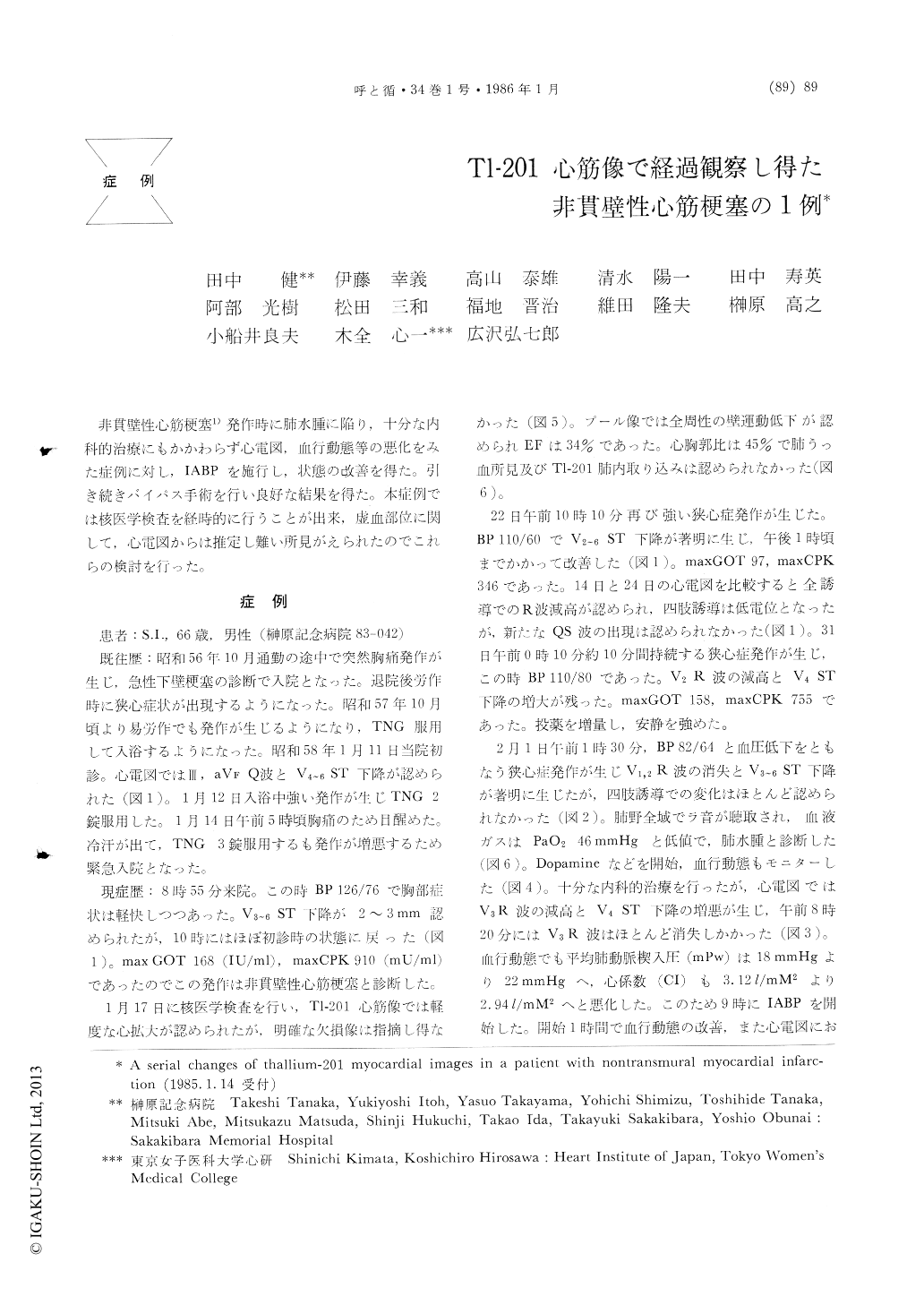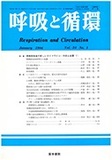Japanese
English
- 有料閲覧
- Abstract 文献概要
- 1ページ目 Look Inside
非貫壁性心筋梗塞1)発作時に肺水腫に陥り,十分な内科的治療にもかかわらず心電図.血行動態等の悪化をみた症例に対し,IABPを施行し,状態の改善を得た。引き続きバイパス手術を行い良好な結果を得た。本症例では核医学検査を経時的に行うことが出来,虚血部位に関して,心電図からは推定し難い所見がえられたのでこれらの検討を行った。
A 66 year old man had suffered from inferior myocardial infarction one year ago and then suffered from effort angina. Recently rest angina attack frequently occurred and he was admitted because of angina attack refractory to TNG. After admission he was treated as nontransmural myo-cardial infarction, however he had repetitive non-transmural infarction. At last he developed severe ischemic attack accompanying pulmonary edema. Despite aggressive medical therapy hemodynamic deterioration increased and V3R decreased. IABP was instituted. After 24 hours hemodynamic stability was achieved and decreased V3R recovered to al-most preattack hight. Coronary angiography reveal-ed three vessels disease. Emergency coronary by-pass surgery to LAD and LCX was successfully performed. On 1 month postop left ventriculography revealed generalized hypokinetic movement and ejection fraction was 24%. After discharge he did well without ischemic events. Through the clinical course R decreased all over leads and new QS were noted only in V1~2. The patient was diagnosed as broad nontransmural infarction. A serial thal-lium-201 myocardial imagings at rest and thallium-201 lung uptake imagings were performed and some interesting findings were obtained as followings.
Myocardial imagings on 3rd day after admission showed no significant defect, however EF was 34%. Immediately after severe ischemic attack marked defect was noted at posterolateral region and ECG showed prominent precordial ST depression without accompanying significant ST change in II, III, aVF. On 3rd day after severe attack under hemody-namically and electrocardiographically stable state posterolateral defect improved, though still persisted. EF was 28%. On 3rd day postop no marked defects were noted in myocardial imagings, so posterolater-al defect at rest after severe ischemic attack was proved to be transient defect.
There were some reports about pathogenesis of precordial ST depression in acute inferior infarction. In this case marked precordial ST depression was noted, however no hypoperfusion area was noted in the anterior wall region. This indicated that the precordial ST depression did not reflect the anteri-or wall ischemia. There were no ST elevation in II, III, aVF, so the precordial ST depression was not thought to be reciprocal changes of ST changes of limb leads. Recently it was suggested that this ST depression reflected posterolateral or anteroseptal extension of inferior wall infarction. In acute phase improvement of hypoperfusion area in posterolateral region was noted and at the same time recovery of precordial ST depression also occurred. It was suggested that precordial ST depression in this case might correspond to posterolateral transient defect, not to posterolateral transmural infarction.
In this case thallium-201 lung uptake was not noted before attack. Immediately after severe attack thallium lung uptake increased and maximal uptake was noted at basal zone of lung, however in chest X-P typical butterfly shadow was noted at upper zone of lung. On 3rd day after severe attack hemo-dynamics improved and butterfly shadow ceased, though thallium lung uptake increased and noted at upper zone of lung. After operation thallium lung uptake improved.

Copyright © 1986, Igaku-Shoin Ltd. All rights reserved.


